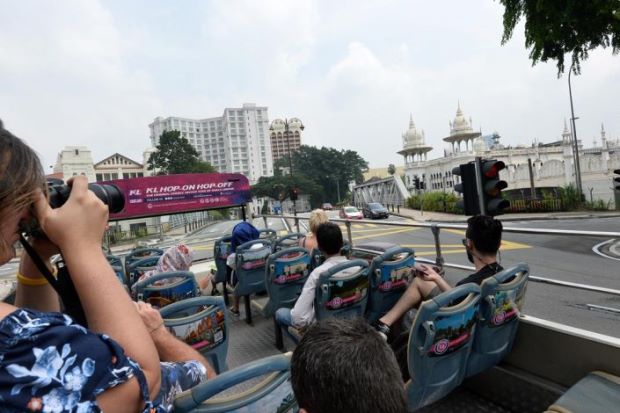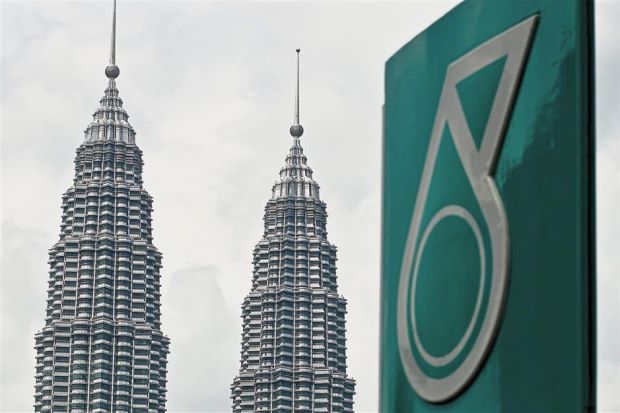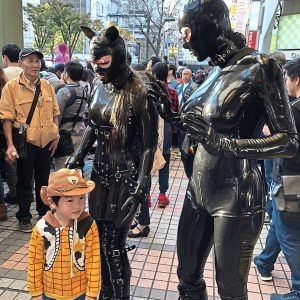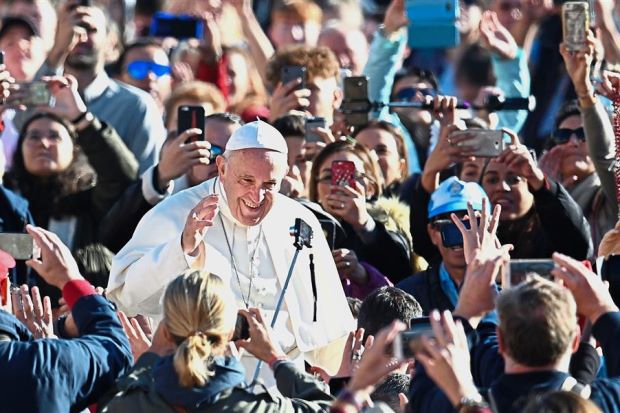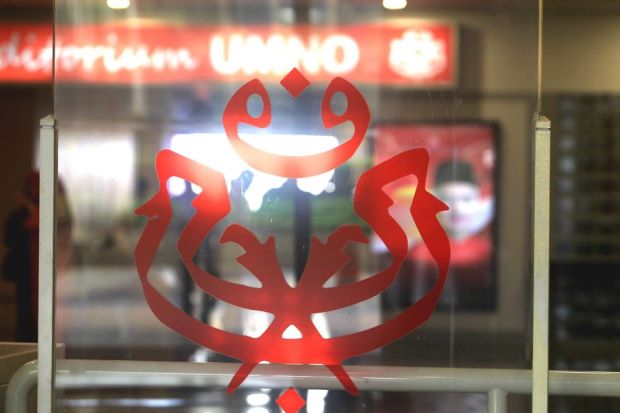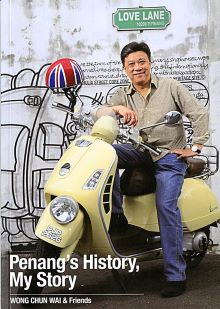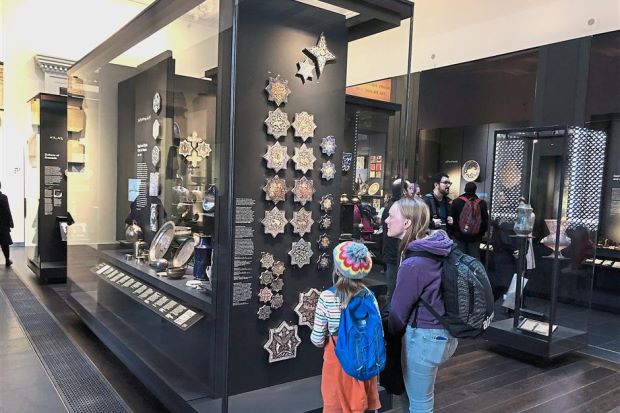
Bridging cultures: Walking through the gallery, the writer saw mostly non-Muslims, including Chinese and Japanese, who seemed genuinely interested to learn more about the beauty and diversity of Islam.
An eye-opening exhibition in London is cluing visitors in to the accepting and harmonious ways of Islam.
AT a time when our narrow-minded politicians are thumping their chests proclaiming themselves champions of Malay rights and Islam by threatening others, it was refreshing to visit the Islamic World exhibition in London and view the religion in a positive light.
It was a proud moment to see Malaysia’s Albukhary Foundation financially supporting a gallery of the Islamic world at the prestigious British Museum and finding itself a permanent feature there.
A large inscribed panel on the entrance of the exhibition relays how the foundation has been promoting goodwill through education and cultural heritage for the past 40 years. The foundation has also been “promoting scholarship amongst Muslims and non-Muslims alike” and aspires to “bridge further understanding between cultures and faiths.”
And certainly, the exhibits at the gallery fit the bill – in numerous parts, it sets to emphasise how Islam values “compassion, tolerance and co-existence”, which the foundation reminds visitors of at the two-room gallery.
Staging these exhibits in London is appropriate, especially when Islam is perceived negatively, no thanks to reports of beheadings, suicide bombers and the seclusion of women, all in the name of the religion.
Well, that’s not very different from some in our own backyard who wield their racial and religious intolerance like a weapon.
This exhibition has been an enriching experience for me as a student of Islam. I saw an incense burner and Torah Pointer (a pen-like accessory used by the Jews when they read their Holy Book), but they were made by Turkmen silversmiths.
But it was the accompanying card which read “recognised in Islam as People of the Book, are Jews and Christians, who were granted special status” that caught my attention. For non-Muslims, it’s lessons like these, even if small, which help us develop a deeper appreciation for the religion.
Of course, this is a far cry from hysterical Muslim individuals calling for the blood of Indians, Chinese and Christians, with images of silat exponents holding keris, and intimidating antics on social media.
And in this frenzy of piety, they forget that “in the name of God, the Most Generous and the Most Merciful” is the phrase recited before each chapter of the Quran.
It’s always in the name of the Most Compassionate, and certainly not the propagation of violence in the name of religion – that’s the genuine Islam.
At the gallery, I learnt how Muslim and Christian noblemen in Syria enjoyed the past time of hunting, depicted on a earthenware bowl and fragmentary flask.
It was common to see people of the two great faiths across the Middle East coming together to celebrate.
And of course, Islam spread because of the trade routes, which brought people from all around together. So, had Muslims been reclusive then, or kept to themselves by refusing to interact with people of other races and faiths, Islam would never have flourished.
The global trade took luxury items as well as raw materials from Middle Eastern cities, as far as those bordering China, all the way to the west. These included incense and spices such as “the cinnamon and sandalwood of India, incense of Arabia, star anise of Southeast Asia and date molasses of Iraq”.
The gallery has many pots which were discovered in Iraq, and though native to that country, is in the shape of imported Chinese jars, evidence of the crossing of cultures along the trade routes. And we all know that Islam was introduced to Melaka, especially in the 15th century, through the influx of foreign traders.
At the gallery, I read about how the markets in the cities of Cairo and Damascus, between 1250-1517, sold almost anything and everything. And that extended to glassmakers designing flasks of different influences, including warrior saints from Christian imagery, replete with their Crusader-style garments and head dress, and even turbaned men in medieval Islamic societies.
There was even a dish with the image of Mary, as she was the most prominent female figure in the Quran and the only one identified by name. Both the annunciation and virgin birth are mentioned in sura 19, surat Maryam, which is named after her.
Interestingly, the dish, depicting the Virgin and Child framed by sprays of tulips and carnations, is believed to be made in Ottoman Turkey.
I had come to the gallery expecting only works of the Islamic World, so, I was surprised to see so many exhibits with intricate elements of Christianity and Islam.
With Muslim and Christian extremists remaining at loggerheads, who would have thought that at one time, believers of these two great faiths lived side by side and respected each other.
The exhibition has received acclaimed reviews from major British media, with The Standard reporting “you get games, amulets and charms, astrolabes, costumes (fabulous) and shadow puppets, as well as the tiles and calligraphy you would expect.
“Obviously the British Museum already had a gallery devoted to the Islamic world, but this is a reordering and expansion of it thanks to a large donation from the Malaysian Albukhary Foundation.”
The Guardian wrote that “the cliche that Islam forbids all representation is demolished: there are human as well as animal portraits throughout this gallery.
“This gallery is a kind of miracle. It sees beyond individual objects to grasp and communicate the principles and intellectual power that give Islamic art its infectious harmony and abundance. Yet it does that without oversimplifying. “
And indeed, visitors can experience a chronological journey of the Islamic world through artefacts, tiles, sculptures, paintings, textile, engravings, art, music and literature.
For the first time, I could see the works of all schools – Sufism, Sunni and Shiites sects were all acknowledged as are the mix of influences that accompany the spread of Islam through both war and trade.
Walking through the gallery, Britons apart, I thought I saw mostly non-Muslims, including Chinese and Japanese, who seemed genuinely interested to learn more about Islam in greater detail, especially the beauty and diversity of the religion.
Non-Muslims should learn more about Islam, and likewise, Muslims should not fear knowing more about other religions. There are plenty of commonalities, especially positive values, in all religions.
Certainly, no religion teaches its faithful to be corrupt, or use race and religion to stoke the fires of controversy when they have lost their moral standing. I simply can’t imagine any religion teaching such values.


